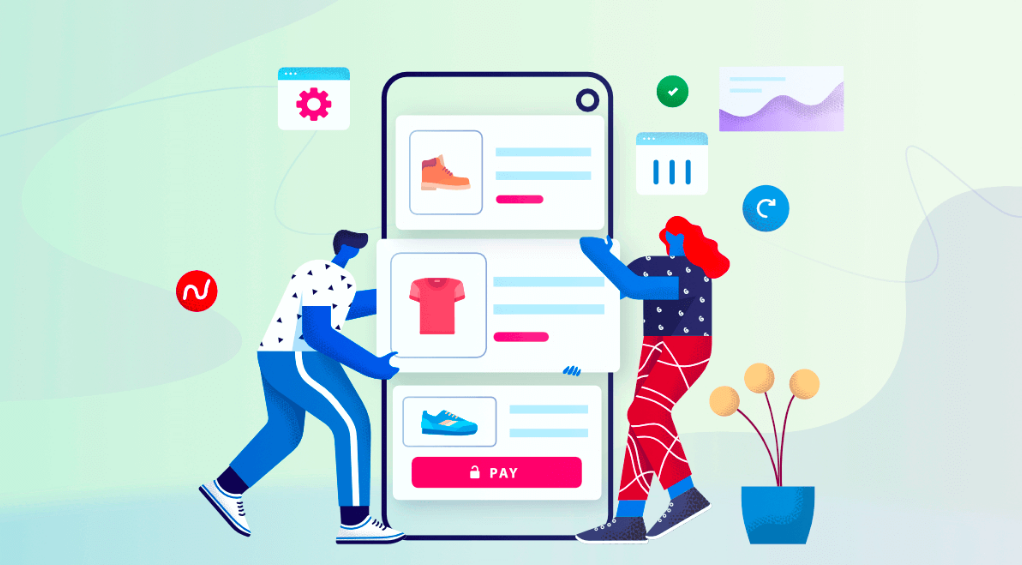The rise of eCommerce creates huge revenue opportunities for retailers. U.S. physical goods online retail sales totaled $365.2 billion U.S. dollars in 2019 and are expected to hit up to $600B in 2024. This means that there are countless options and ways for shoppers to find any items they need. With so much competition for retailers, it is no wonder that the stakes for boosting the conversion of shopping carts are high.
This makes it even more important to lower your shopping cart abandonment rate and be considerate while leveraging eCommerce website development services. Statista records a worldwide cart abandonment rate of about 79%. Rates so large mean even a small change in the average abandoned cart rate will make a big difference, yielding an opportunity cost of $18 billion annually.
But raising the rate of cart abandonment is not just about optimising the page for checkout. It’s about the experience retailers offer outside the shopping cart to their customers. Statistics indicate that, for example, customers buying clothing online may leave due to concerns about slow delivery. Also, top product issues such as fit and price were eclipsed by this concern for the return policy.
Here’s what distributors need to know about improving their consumer journey outside the shopping cart and what it means to reduce the overall rate of cart abandonment.
Cart Abandonment Statistics and Last Mile Supply Chain
How do top distributors integrate these price and pace lessons into their shopping carts? A Baymard survey found that, due to additional expenses, 53% of respondents abandoned carts. Consumers especially hated Higher-than-expected shipping rates, taxes, and extra fees.
Customers prefer to see quick estimates of delivery, too. The eBook Last-Mile Delivery Wars noted that if they see more immediate delivery date options in the shopping cart, 60.7 percent of clients are more likely to make a purchase.
No requirements for customer registration
You may be inclined to collect as much customer details as you can, but rather than filling out a lengthy registration form. Many prospective customers may want to leave you. Enable clients to buy without registering. Keep the registration form as short as possible if that isn’t a possibility. You need information that you need, such as an email address.
Seamless Checkout for Customers
When opting for eCommerce Store Development, it is always better to exclude any generic navigation, statistics, product deals, etc. When the customer initiates, checkout only views links that process the transaction. This would lower the chance of distracting the consumer from completing the process of checkout.
Prefer upselling post the Sale
There is often a temptation to offer a customer more. Constant upselling, however, raises the likelihood that a consumer will lose. It is much easier to close the sale and sell it later. With extra deals or discounts on similar or special items, you can always follow – up through email.
Enable Transparent Costing
Ensure that all expenses, such as delivery, packaging, taxes, etc., are shown to the client. If a user were buying an item for $20 and asked to pay $30 without understanding what the extra costs were linked to, wouldn’t they feel tricked and abandon the shopping cart?
Leverage the Coupon Strategy
Most online shoppers are bargain hunters and provide them with instant gratification with discount coupon codes. When they search for a coupon, these shoppers might drop their shopping cart. Make it easier for consumers to find them if you have coupon codes.
The purpose is to get your clients as quickly and conveniently as possible through the checkout process. Make sure that the improvements you make are checked and modified to see if they affect the method.
Your cart conversion rate is not yet another portal for happy customers from your website visitor. It can only be the primary gateway. You will boost your total sales funnel by lowering your abandoned cart levels. And for your customers, you cannot build a seamless experience even if you have a shopping cart that fulfils your website’s promises. The relationship you create with your customers must be every step of the way from the shopping cart to the back end. Checkout the 5 simple steps to start your eCommerce store.
